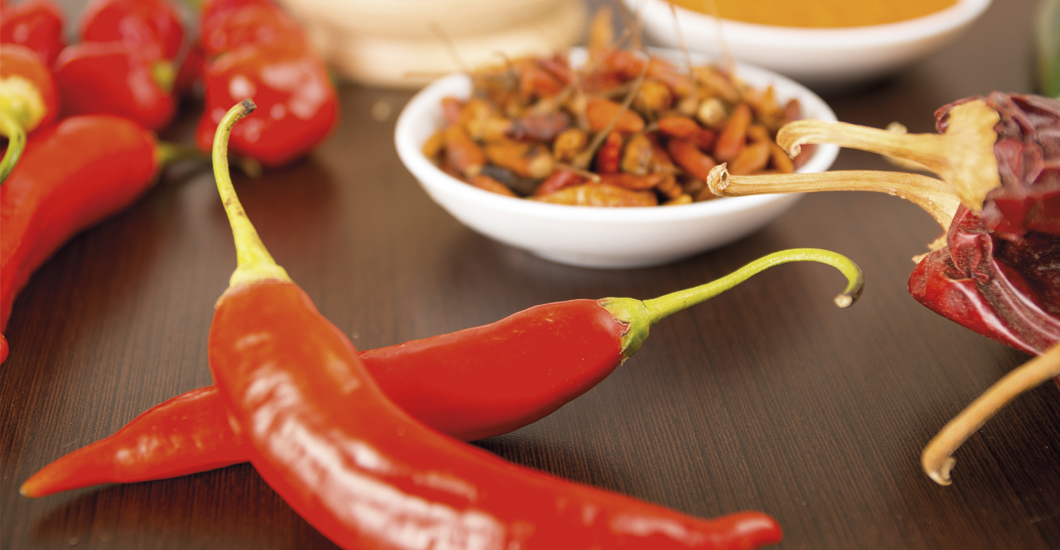The chili pepper: A flavor that heals
Nutrition & fitness /

For more than 6,000 years, chili peppers have been a staple in kitchens around the world. Behind the spicy flavor that challenges the palate with its heat there are multiple medicinal properties hidden, almost like a miniature first aid kit.
In Jorhat, a town located in northeastern India, on the night of April 10, 2009 a young woman named Anandita Dutta Tamuly decided to try to eat as many peppers in the shortest amount of time possible. Her mission was clear: to be recognized as the world record holder for eating the spiciest foods, a title normally held by Danes, South Africans, and of course, Mexicans. Without batting an eye, the 26-year-old woman ate 51 ghost peppers in less than two minutes. The ghost pepper, or naga jolokia, is a chili pepper that looks like a red, throbbing, human tongue. When asked about how it feels to eat the peppers, Anandita admitted that the spicy sensation doesn't bother her, and doesn't even feel the heat in her mouth when she is eating them. "I've been eating hot peppers since I was five years old," she added. "My mother would rub chili paste in my mouth to heal sores and since then I've loved them."
Anandita's mother's recipe worked because peppers, also known by the botanic name Capsicum—which include the 40 varieties of hot peppers, bell peppers, and sweet peppers that flavor dishes around the world—are renowned for their painkilling properties. This is due to capsaicin, the active compound in the pepper, which only irritates mammal's palates and has been used to treat lower back pain, neuropathic pains, and diabetes-related illnesses. Studies conducted in the United Kingdom have also found that this compound can eliminate cancer-causing cells in the lungs and pancreas without damaging other cells.
Rich in vitamin C, potassium, magnesium, and iron, chili peppers practically seem to be a cure-all. Their medicinal properties range from being an appetite stimulant to a cure for depression. Ayurvedic doctors claim that their aphrodisiac properties stimulate the spirit and blood, and recent studies from the University of Toronto suggest that their seeds, which are rich in polyunsaturates, may help decrease the risk of blood clots. Although many myths abound that peppers are harmful to the digestive system, the truth is that their high fiber content is good for intestinal motility and that they increase the secretion of gastric juices which helps prevent gastritis.
Archaeologists and researchers at the University of Calgary recently discovered that the first hot pepper was grown in Ecuador over 6,000 years ago. It has been widely documented that the Aztecs and Incans grew hot peppers and used them to season their food. Christopher Columbus brought the chili pepper plants to Europe and offered them to the kings of Spain as a substitute for black pepper, which at that time was scarce and very expensive. In his "Historia general de las Indias" (General History of the Indies), Francisco López de Gómara wrote that "they tried chilies, an Indian spice that burned the tongue." From there, chilies opened trade routes, stopped being an ingredient exclusive to Latin American cooking and became a staple seasoning in Asian and Indian kitchens as well.
If you still don't dare to incorporate chili peppers into your diet, remember that there are several tricks to cool down your mouth from the hot pepper's heat. You just have to drink a cold beverage, put a pinch of salt on your tongue, or drink a glass of milk to sooth the burn. Maybe with some practice you can even break Anandita's Guinness World Record.


